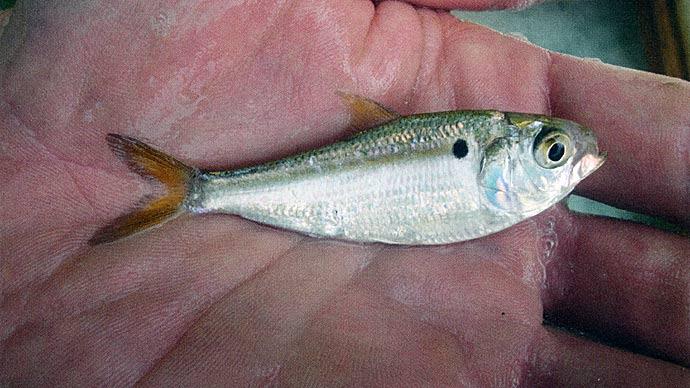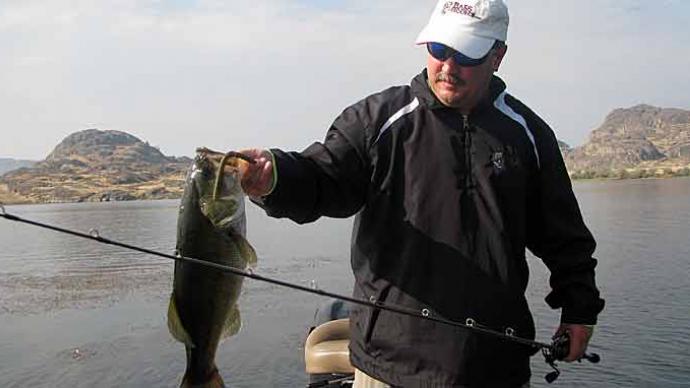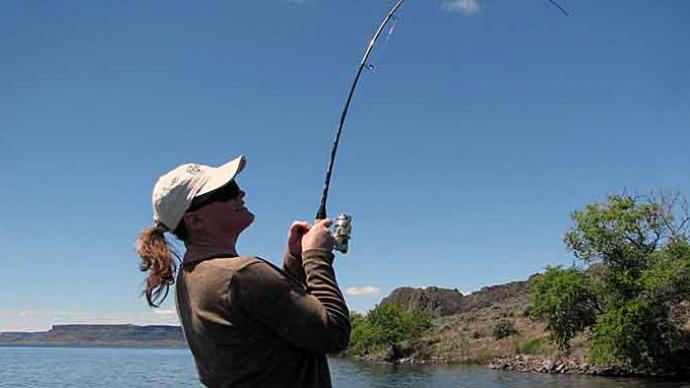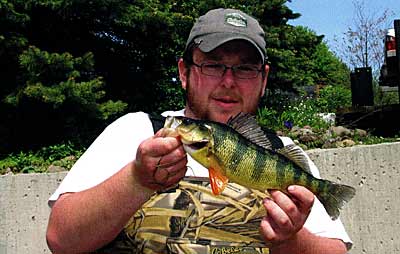
Recently, on the Pond Boss website discussion forum, there was some banter between several folks comparing threadfin shad to tilapia. The gist of the discussion was focused on whether either species affects the primary productivity of the pond. Essentially, if tilapia are stocked and feed on filamentous algae, detritus, and filter algae from the water, does visibility increase? If visibility increases and plankton decrease, does that have an adverse effect on threadfin shad, or vice versa?
Those guys have some discussions, I'm here to tell you.
Let's go a little deeper and compare the different forage fishes. There's a book to be written on this topic, but because this is only a feature article, you may need to dig a little deeper in back issues of Pond Boss magazine for more specifics.
The reason biologists recommend different species of forage fish in different parts of the nation is fairly simple. We compare forage fish, their behaviors, life cycles, life histories, and habits in your part of the country to match them to the target species you are after.
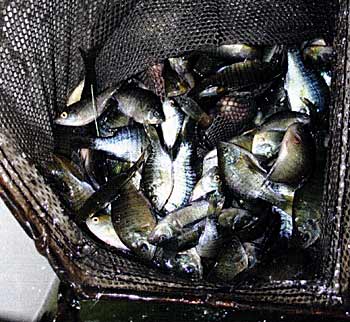
For those of you in the north, say a target species is walleye. For folks in the south that don't understand this fish, walleye got that name because of the giant lens in their eyes. You can actually shine a spotlight at night and see the light as it hits that fish's eyes. They can see in the dark and commonly head to shallow water to feed during nighttime hours. What forage fish best suits that practice? Any fish that lives in shallow water and thrives in cool water. Those would be a variety of minnows and sunfish. Yellow perch are a good candidate as a forage fish in these waters, even though it's a great game fish as well.
But, is that the only place a walleye ventures out to eat? Not at all. They tend to prefer rocky cliffs in deeper water when they aren't moving shallow at night. What kind of forage fish lives there? Or, travels through open, deep water, next to rocks? In the south, for those who might try to grow some walleye, that might be threadfin shad and small bluegills seeking refuge in crevices and crannies of the rocks. In their natural range of northern tier states, walleye eat bugs, crawfish, and similar to other predators, anything that fits into their mouths, especially other fish. The best forage fish is what lives in those two environs.
To truly understand which forage fish to choose, learn how each species lives, eats, reproduces and behaves.
A classic example is bluegills. Bluegills are notorious for reproducing often, as many as five times in the south, maybe two or three times in the Midwest, and once or twice in the north yearly. Since they spawn fewer times in the north, they grow faster and many individual bluegills end up too big for most game fish to eat, and ending up crowding and not growing large enough for people to enjoy. They may grow to five inches and stop, not functional for the fishery or for the angler.

Pumpkinseed sunfish, on the other hand, love cool water, spawn once or twice yearly, and make a good addition to smallmouth fisheries.
Take each species, learn what they are and how they make a living, and then compare the different species.
Let's go back to the threadfin shad compared to tilapia. That discussion started with a fellow from Louisiana who owns land with a lake he designed in east Texas. His question was actually related to the fertility of his water and if it would support threadfin shad and tilapia. His question was centered around the premise that if tilapia eat his algae and plankton, they'd essentially be competing for food.
What wasn't in his thought equation was energy input. With the sun's rays beaming down, any nutrients dissolved in water are likely to fuel a healthy plankton bloom. With a typical pond, nutrient input often exceeds usage. For this example, when a fish eats in a natural environment, the energy conversion is about ten to one. Eat ten pounds of algae or plankton and gain a pound. What happens to the nine pounds that don't become fish flesh and bones? It makes its way back into the water, or the pond mud, to fuel something else to grow in the presence of sunlight. Essentially, when a tilapia eats a strand of filamentous algae, what the fish doesn't convert goes back into the pond to be used again, with
some fraction lost to energy.

Bluegills are carnivores, preferring small fish. But they'll eat bugs, worms, and any kind of living thing they can swallow—except snails. They can't convert snails because they can't break the shells. Ah, but redear sunfish can. So can pumpkinseeds. Those two species complement bluegills because they eat a different food, and they spawn at slightly different times.
Threadfin shad must swim all the time or they'll sink. They don't have a swim bladder so they have to be on the move. Partly because of that, they are filter feeders, gleaning their food from the water column itself. Stocked with tilapia, it's easy to suspect the two can compete, but the reality is they really don't. Tilapia tend to stay closer to shore, foraging and feeding in shallow water. Threadfins, a few weeks after hatching, move away from shore to feed and move in large schools. Those two don't directly compete.
When you look at minnows, especially fathead minnows and golden shiners, you see two totally different species with polar opposite habits. Fatheads build a nest on the underneath sides of firm objects and stay with the eggs until they hatch. Slow and sluggish, fatheads soon disappear from a pond's fishery and it does no good to add more. They are quickly eaten. Shiners are nest raiders. After they lay their eggs near shore on grass, they take off and go feed—on other fish's babies and eggs.
In the north, Emerald shiners are sometimes a good choice, as are scuds, native crawfish, and grass shrimp.
The most commonly stocked forage fish tend to be regional. Pumpkinseeds and Yellow perch dominate northern waters with some play for native minnows and shad species of that region. Bluegill are important there, with respect to their tendency to overpopulate via rapid growth. The Midwest has more latitude simply because they have cold, cool, and warmwater seasons that mitigate each other.
In the south, bluegills are the backbone, with redear sunfish as added insurance. But threadfin shad play a role, and sometimes in special trophy bass situations, a fish such as gizzard shad can play a role, when used cautiously.
Tilapia come into play where they are legal and effective.
Here's where we get to the bottom line. It's up to you to figure out which forage fish species to use. I spoke with a man in mid-Michigan a few weeks ago who is adamant about seining minnows from a local stream for his new bass lake. He's used them in other ponds before and says they were a great addition. My take is this: If you have healthy water, substantial habitat for that species, provide enough food, and pay attention to your pond, use those species. If any of those things don't exist, lower your expectations—or guide your pond.
In order to figure out how the different species will complement your fishery, take time to learn about each and compare. After all, you are building a community underwater and want the best players to be there.
Reprinted with permission from Pond Boss Magazine

